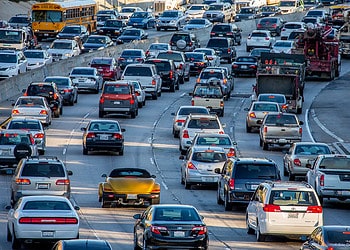Elevated air pollution events such as fireworks or wildfires can also affect indoor air a new study, shows. The finding is especially relevant as many are spending more time indoors amid the coronavirus pandemic, with the researchers calling for ways to mitigate contaminant intrusion such as filter upgrades.

In the US, more than 141 million people live in areas with unhealthy levels of air pollution, and pollutant exposure rates are more likely to be determined by race and socioeconomic status. Elsewhere, things are even worse: most of the world’s most polluted cities are in India or China. While most people are aware of the harms of air pollution, fewer people are aware that indoor air quality may be worse than outdoor air quality.
Humans usually spend 80% or more of their time indoors, and as a result of the COVID-19 pandemic, many people will are working from home, and will continue to do so further into the future — which means more exposure to indoor air.
Previous studies have described air quality in urban settings and how the built environment interacts with pollution-specific events. Now, Daniel Mendoza and a team of researchers used a network of research-grade fine particulate matter (PM2.5) sensors placed both inside and outside a building to quantify emissions trends around this pollutant. PM2.5 is of significant interest as studies have shown its contribution to a wide array of illnesses such as heart disease and depression.
The researchers studied the short- and long-term relationship between indoor and outdoor air quality in an urban building in Utah’s Salt Lake Valley. They captured three different types of elevated pollution events: winter inversion, seasonal wildfire, and local fireworks. Despite the belief that indoors will protect from poor air quality, they found that indoor conditions can be just as harmful to human health.
The indoor air quality sensor reached “yellow” levels during a wintertime inversion event in December, while the air quality index outdoors reached orange and red levels. In all, the pollution levels inside were about 30% of what they were outside. For Mendoza, this wasn’t surprising. Only 20% of the air pollution during inversions comes directly from combustion exhaust and the rest is secondary.
Something similar happened when three active wildfires were burning in California. Indoor air pollution reached about 78% of outside pollution levels. For two consecutive days, “indoor air quality reached levels considered problematic for health compromised populations and nearly reached levels considered unsafe for all populations,” the researchers wrote.
The study also looked at the impact of indoor air pollution from fireworks events. The smoke from fireworks is somewhere between inversion pollution and wildfires, the researchers explained. It has primary smoke particles as well as gases that can combine to produce secondary particulates, which can come from the chemicals used to produce fireworks’ bright colors.
Air quality sharply dropped once fireworks shows began and stayed in the red range, with spikes into the purple “very unhealthy” range, for about three hours. Indoor air quality reached orange levels, registering about 30% of the outdoor air pollution. “It was only after 8 AM that indoor air quality returned to pre-fireworks levels,” the researchers wrote.
The researchers are now doing a follow-up study, installing an air quality sensor on the rooftop of the Utah State Hospital. Two indoor air quality sensors were placed in rooms belonging to the dormitory and daycare wings as they have different air handlers, assessing the impact of different ventilation and filtration technologies on indoor air quality.
The study was published in the journal Science of the Total Environment.






